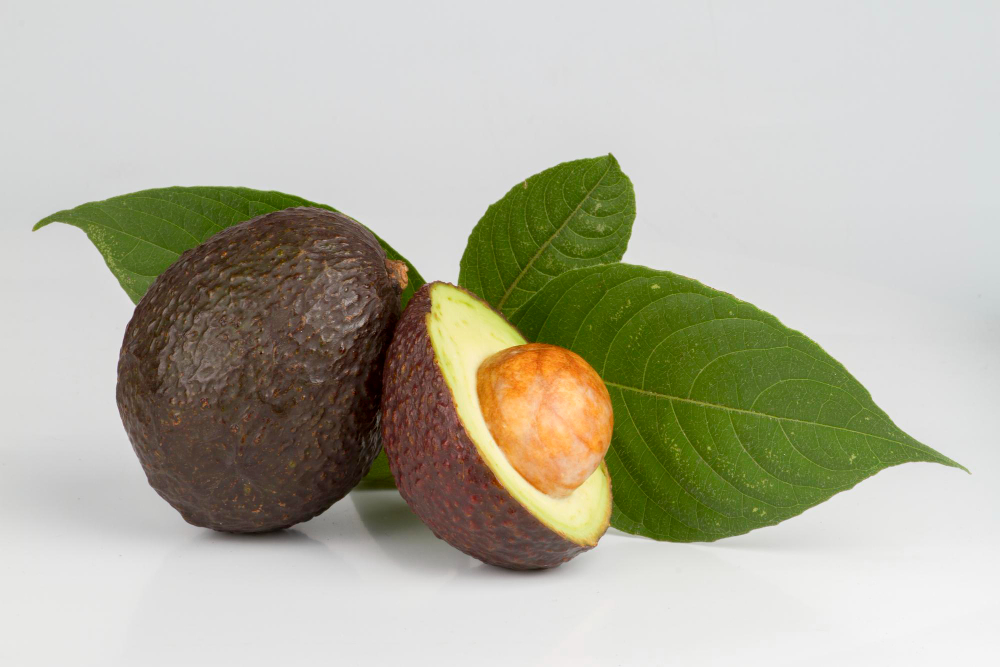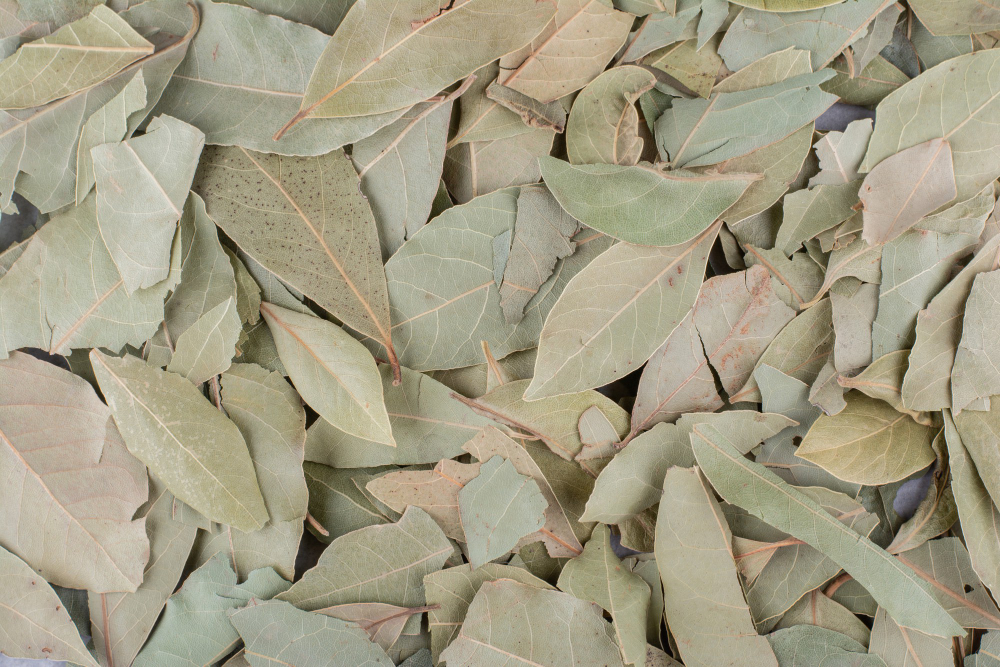Avocado leaves are not comparable to bay leaves. May be medium or small and oblong to elliptic in form, avocado leaves average 4-10 centimeters in width and 10-30 centimeters in length. People interested in trying other parts of the avocado tree ask – what do avocado leaves taste like? Do avocado leaves increase blood?
It has a leathery dark green leaf surface, while the below leaf surface is matte and light green to brown. In addition, each elongated and narrow leaf has a noticeable bright green-white vein that runs through its center.
Before usage, avocado leaves are often roasted, imparting a nutty hazelnut scent and a little anise-licorice flavor. Additionally, the leaves may have a slightly harsh and spicy flavor. Avocado leaves are accessible throughout the year.
The aromatic leaves are commonly used. You may purchase bay leaves whole, either fresh or dried, or as a powder. The leaves are added to slow-cooked dishes, such as soups, sauces, and stews, before being removed before eating. They have a flowery and herbaceous aroma reminiscent of oregano and thyme and are the most commonly used herb. The bay leaf originates from the bay laurel plant, a slow-growing evergreen shrub that thrives in warm areas. The plants are cultivated for their decorative value and then dried for culinary purposes. The thick, leathery leaves have pointed tips and are elongated. Dried bay leaves, which have a little more intense aroma than fresh ones, are called for in recipes.
Are Bay Leaves and Avocado Leaves the Same?
Avocado leaves and bay leaves are not the same. They come from different plants.
Culinary Avocado leaves are gathered from the Mexican avocado kinds, botanically designated as Persea drymifolia, and belong to the same Laurel family as the bay leaf. Fresh and dried avocado leaves are commercially available and used medicinally for flavoring food. There are several cultivars of avocado leaves; some are allegedly mildly hazardous, notably Guatemalan avocado leaf variants. However, there is some controversy around avocado leaves; nevertheless, further study is required to conclude the subject. Avocado leaves are a rich source of fiber and anti-inflammatory antioxidants like phenols and flavonoids. In addition, they include zinc, manganese, calcium, sodium, magnesium, iron, potassium, and sodium.
7 to 10 centimeters in length and 3 to 5 centimeters in breadth, bay leaves are long, oval, and taper to a narrow tip. These short-stemmed, dark green leaves have a smooth, glossy top and a lighter green underside when they are new. When dried, bay leaves become leathery, matte, and a dark olive green color. Fresh Bay leaves are more potent than their dried counterparts, but both have a woodsy, herbaceous, and somewhat flowery perfume suggestive of rosemary, pine, and citrus. Bay leaves have a moderate, bitter, and spicy flavor with hints of mace, cardamom, oregano, and thyme.
Botanically designated as Laurus nobilis, bay leaves are the foliage of the evergreen shrub, the bay laurel, a Lauraceae, or avocado family member. Bay laurels may grow as tall as twelve meters. Bay laurel leaves are used for flavoring vegetable dishes, meat dishes, stews, and soups. It is crucial to note that several plants, including the Indian, Indonesian, and California “bay” leaf, are referred to and substituted for the Bay Laurel leaf. However, only the California bay leaf belongs to the laurel family. Although the leaves resemble the Bay Laurel leaf, they do not possess the same taste profiles or culinary properties.
Can You Use Avocado Leaves for Cooking?

Fresh and dried avocado leaves are ideal for culinary applications such as toasting, boiling, and steaming. Fresh avocado leaves may be used as a bed for roasting meats, as a covering for steaming or frying seafood, and to provide flavor to tamales. Additionally, they may be dried and used in soups, stews, mole sauces, and salad dressings to provide a hazelnut and anise taste. The shelf life of dried avocado leaves is one year when stored in an airtight container in a cold, dry, and dark location. When placed in a container half-filled with water, covered with a plastic bag, and refrigerated, fresh avocado leaves can be preserved for a couple of days.
The dried and fresh leaves of the native Mexican avocado (Persea drymifolia) provide a distinctive anise taste to a wide range of meals. In areas of Mexico, particularly the southern states of Oaxaca and Puebla, (black) beans, tamales, soups, moles, pipianes, and stews are prepared with toasted and fresh leaves. In addition to being used in casseroles, as a bed for roasting meats, and as a wrap for fish, fowl, and pork while grilling, it is also piled into casseroles.
Are Avocado Leaves A Spice?
Yes, dried avocado leaves can be dried, ground up, and used as a spice. They are cooking using the leaves of the Mexican avocado (Persea Americana var. drymifolia). The avocado tree is closely linked to the Bay leaf shrub, so it’s not a stretch. On avocado trees, leaves typically persist for two to three years before dropping off and being replaced. The younger, smaller leaves are more flavorful than the older, bigger ones. The flavor of Avocado Leaves is similar to licorice or anise. Similar to bay leaves, dried leaves may be purchased in Mexico. The leaves are roasted before being crushed or processed into a powdered spice.
What Does Avocado Leaf Cure?
The avocado fruit and its leaves and seeds reduce cholesterol, improve sexual desire, and trigger menstruation. In addition, some of the oils in avocado (known as “unsaponifiable fractions” by chemists) are used to cure osteoarthritis.
The avocado bark, leaves, and seeds are used for dysentery and diarrhea. Avocado oil is used on the skin to cure skin thickness (sclerosis), periodontal disease (pyorrhea), and arthritis. Psoriasis is treated with a mixture of avocado oil and vitamin B12 supplementation. The fruit’s pulp is used topically to stimulate hair growth and accelerate wound healing. The seeds, leaves, and bark are utilized for toothache relief. The high fiber content of avocado may explain its ability to decrease cholesterol. Avocado also includes compounds that may heal cartilage in osteoarthritic joints.

